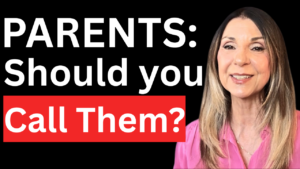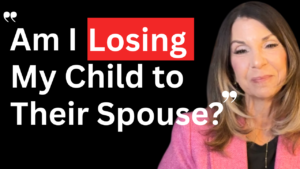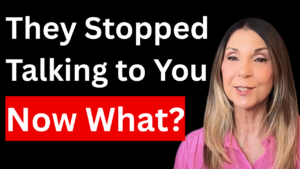Are you wondering how to lessen stress? No doubt, in terms of world events, 2020, has been the most challenging year in our lifetime. It is a conversation in a Zoom room that goes around in circles.
For those who have been managing stress reasonably well, I congratulate you. With the subthreshold intravenous injection of troublesome events regularly, it is a remarkable feat to be keeping your stuff together. Or like many, you find getting a bit irritated, perhaps losing your cool at times, perhaps worrying more than usual. You may even be using the “A” word, anxiety? Are you waking during the night or having trouble falling asleep?
Everyone processes stress differently. Some of us pull inside and put up a strong exterior and strive to appear to carry on as usual. Some of us seem to have a lot of difficulty regulating our internal and external reactions to stress. Some of us are somewhere in between.
“What matters is that we listen to the sensations we experience and we honor what we are feeling.”
– Marie Morin, Morin Holistic Therapy and Coaching
There are many physiological stress signs. In this article, we explore 3 signs of stress overload and offer a breathing technique that is efficacious and easy to do.
Three Signs of Stress
Physical sensations such as headaches, increased heart rate, and catching your breath are clues to inform our state of well-being.
1. Headaches
Headaches are more than a nuisance; they can sometimes alter our ability to function at our best. Headaches can also be annoying and untimely. Who has time for a nearly debilitating headache?
That headache you felt coming on after your last phone call with that person in your life that presses most of your annoyed buttons. We feel it coming, it gnaws and gnaws until there is no denying you have a nasty headache. The good news is there are alternatives that we can consider mitigating the stressful cause of the headache.
2. Increased Heart Rate
Increased heart rate is not always just a sign of stress and checking with your primary doctor is recommended. Stress and turmoil can trigger stress hormones that can affect heart rate.
In its simplest description, a release of the hormone adrenaline that then prompts your breathing rate and heart rate to temporarily escalate. When breath rates quicken this then increases more carbon dioxide which heightens the stress response.
3. Feeling You Can’t Catch Your Breath
Feeling like you can’t catch your breath is typically and similarly a symptom partner with increased heart rate. It is not uncommon when experiencing stress overload. Often when we reach that stress threshold our physiology and neurology work in concert to alert the fight or flight response of feeling threatened and to move quickly to make you safe. Increased breathing results that further exacerbates the stress you perceive. Compounding the dilemma is your initial stress and now you’re feeling short of breath.
When this happens our bodies are alerting us to important messages, so we take notice. If we consistently ignore it catches up to us and causes distress until we must listen. Fortunately, there are changes we can commit to make that can be easy and enjoyable.
Perhaps you are very familiar with yoga or maybe it hasn’t been your preference. Consider the idea that one does not need to enter a life as a devoted yogi to benefit from the research tested practices. Additionally, the variety of breathing exercises are endless. Many of the respiration exercises are suitable for remembering in a pinch to relieve stress. Whatever the case, the ancients have known the healing benefits of purposefully regulating our breath.
Breathing Practice that Softens Stress Responses
In essence, Pranayama, where prana means, “life energy” and “yama” means “control” is the art of respiration regulation. In fact, Yoga’s main component is Pranayama and can explain why we feel so much better after a modern yoga class.
The combined breathing and poses has remarkable benefits. For those of us that are better convinced when there are studies, you will be interested to know numerous Pranayama or breathing practices have been studied and found to be remarkably helpful for trauma survivors.
Pranayama in its core provides a breathing pattern, a rhythm that benefits wellbeing by merging the physical and the mental. What the ancients who practiced controlled breathing knew is it reliably and positively impacts mood and relaxation. A 2010 study found that practicing 5 minutes of Bhramari pranayama, lowered both blood pressure and heart rate.
Practicing breath techniques moves one into parasympathetic dominance, meaning the breath helps alternate one out of the stress, fight or flight system or the sympathetic nervous systems response into a calmer state or rest and digest. One such practice, Bhramari or Humming Bee, is beneficial to do at any time during the day, before going to sleep or anytime one needs to wind down.

How to Experience the Humming Bee or Bhramari Pranayama
Yes, this is a unique exercise. Give it a try and you will notice a difference:
- Sit in a relaxed position with your spine straight.
- With your palms facing you, place your thumbs over your ear canals, place your forefingers above your eyebrows and your ring fingers on the outer side of your nose, with remaining fingers over your closed eyes.
- Inhale slowly for about 5 seconds and exhale slowly making a humming sound through your nose for up to 15 seconds.
- Do the breathing pattern where you are comfortable.
- Repeat this for five minutes.
- Stop and enjoy the sensation of increased oxygen and a softened stress response.
- Take it in for a moment or more, just feel the rest.
The moral of the story: a humming bee can take down an elephant. When the constant influx of uncertainty and discomforting information begins to get a hold of your stress level, consider this breathing exercise. Think about how taking five minutes to breathe in this fashion can adjust you into a state of relaxation and comfort. Prayers have often given great wisdom during difficult times. Remember this: “God grant me the serenity to accept the things I cannot change, the courage to change the things I can and the wisdom to know the difference.” We can’t change what is beyond our control at this time, but what we can do is address what we can change. We can begin little things to help us pause and slow our breathing. We take down the elephant by taking time to reset, manage our stress one breath at a time, one day at a time.
Pramanik T, Pudasaini B, Prajapati R. Immediate effect of a slow pace breathing exercise pranayama on blood pressure and heart rate. Nepal Med Coll J. 2010 Sep;12(3):154-7. PMID: 21446363.









